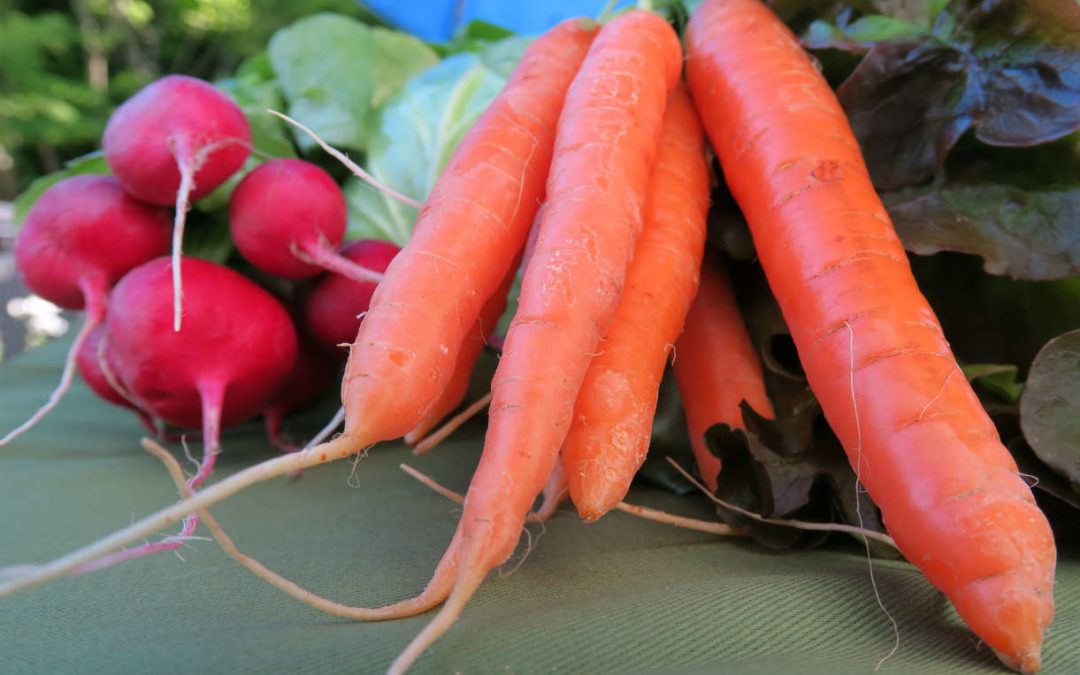“I spoke to the soil recently, receiving wisdom from the earth.” Nash Huber–iconic organic farmer–was speaking from depth of his soul on soil and our human connection to it through the food we eat. My psyche was mesmerized by his words.
Nash’s Journey
I consider myself beyond fortunate to know Nash. Nash is of sauerkraut heritage, as am I. He grew up on a family farm in Illinois, but left the homestead to be schooled in organic chemistry, analyzing corn and soybeans, the antecedent of our industrialized food system. In 1969, he traveled to the Olympic Peninsula to get back to the land, to reconnect with his farming roots. It wasn’t until 1979 that he founded Nash’s Organic Produce first renting or borrowing garden-sized plots.
Now with 400-acres farmed in the fertile Dungeness River Delta, nine landlords, and 40-years of growing food for the burgeoning organic market, he focuses on infusing us with his passion for the land. The land is the root for all Nash does.
“We have a microclimate here in the lower Dungeness Peninsula that is so unique. It is one of the two best places in the world for growing brassica seeds,” enthuses Nash. I remember the first time I heard this as if it were yesterday: the Dungeness Peninsula and northern Europe are the best places to grow these specific seeds.

Nash’s Best Carrots
The Dungeness climate, soils, and an abundance of irrigation water fosters a year around agriculture production system with spinach, basil, and cauliflower in the summer and brussels sprouts, cabbage, and the legendary Nash’s Best carrots in the winter. (If you have never experienced one of Nash’s Best, then you must. I recommend a blind taste test with Nash’s Best and the ‘other carrot.’)
Nash’s infusion of soil soul guided me on my procurement mission for our Thanksgiving Feast ingredients. Full integration of the best of the maritime Northwest’s November produce ladened our table. Roasted brussels sprouts, cauliflower, broccoli, and cabbage is the ultimate brassica mélange. Mashed potatoes from spuds grown in flat bottom-land soils, roasted winter squash, and cranberry-ginger preserves fresh from locally harvested bogs filled the table.
I also challenged myself for the first time to make kimchee, Korea’s national pickle dish. I couldn’t resist the Napa cabbage, leeks, and radishes at Nash’s University District Saturday market stand and I wanted to honor my children’s heritage on Thanksgiving. Kimchee requires planning ahead. The cabbage and other vegetables are salted overnight to soften them, and then fermented with garlic, chilies, and gingerroot for up to a week, to create the Korean spicy pickled concoction, favored by the discerning palette.
Savoring Thanksgiving, I thanked Nash for giving me that sense of knowing that, “We must get back to the land.” As with every conversation with Nash, I leave settled, whole, and complete. It is a breath of fresh air to be back in the soul of the earth, breathing, centering, being enveloped in what is most important in our lives–food and the land that grows it.
Kathryn Gardow, P.E., is a local food advocate, land use expert and owner of Gardow Consulting, an organization dedicated to providing multidisciplinary solutions to building sustainable communities. Kathryn has expertise in project management, planning, and civil engineering, with an emphasis on creating communities that include local food production.

